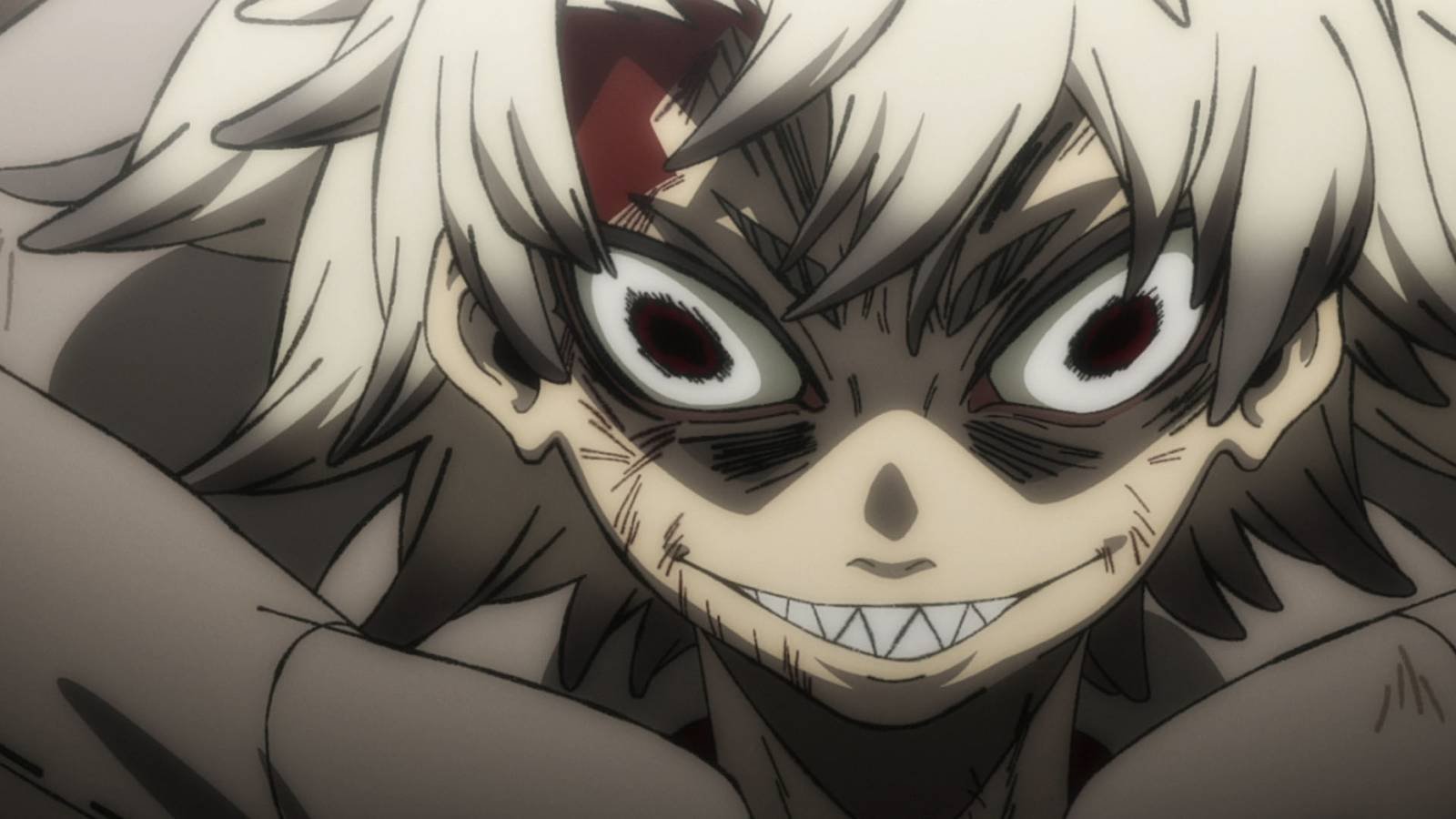Gachiakuta is a stylish anime with one of the coolest power systems I’ve seen in recent times. However, these are not the reasons why it stands out. Gachiakuta tells one of the most visceral stories I’ve seen in a shonen show. Pulling no punches, this anime is not about the struggles to create a better future, but about the feelings of those surviving in a merciless world.
The protagonist of Gachiakuta is Rudo, a boy who, after witnessing the assassination of his foster father, is thrown from the edge of a floating island called Sphere — and ironically referred to as Heaven — to die for a crime he didn’t commit. Sphere is especially marked by social segregation. The wealthy citizens of the island live lavishly in glowing white buildings in the center of the island. Surrounding them are slums. Below Sphere, Rudo discovers a new world at the bottom of “the Pit,” a devastated land, polluted by the endless streams of trash dumped by the citizens of the world above.
Unlike other shonen, it’s difficult to find a source of hope in Gachiakuta. While the citizens of Heaven are cruel and unfair to those they judge as lesser, the ethics of the Pit (known as “the ground” by its inhabitants) are based on survival. There are good places on the surface, like Canvas Town, where only those with virtuous intentions can enter. But these are flickering lights in a dark ocean of evil and danger.
Even the characters in Gachiakuta aren’t the usual shonen gang, although the story uses some of the genre’s conventions. There’s the cute girl who might become a love interest to Rudo, and the hot-headed dude who is actually a nice guy. Even so, the relationship between Cleaners (the group of individuals with special abilities that Rudo joins) never, develops into a beautiful friendship. It feels more like camaraderie among co-workers. No “Naruto fighting Sasuko on the waterfall” moment. They respect and protect each other, but they don’t share a deep level of intimacy.
When we’re first introduced to Rudo, he seems like he’s an ordinary shonen protagonist. Like Naruto, he’s an orphan who’s alienated for being different. Like Midoriya, Naruto, and Luffy, Rudo’s power turns out to be one of the strongest abilities in the series. But Rudo’s anger is his alone. The boy has a sweet side — he cares about the girl he likes and gets wild when trying candies for the first time — but his goal is to return to Sphere and get revenge. What motivates Rudo is not a romantic sense of justice or an idealized dream of a better world, but an anger that burns and consumes him.
The violent and sad reality of Gachiakuta is slowly introduced throughout the first 11 episodes, but it’s in episode 12 that the show’s darkest colors are painted with ruthless strokes.
The Cleaners are looking for a girl who claims to have seen an angel coming from the sky, which could lead to some vital information regarding a method to enter Heaven. In the middle of a desert, they meet Amo Empool, an apparently harmless girl who carries no weapon and is not wearing a mask to protect herself from the poisonous air of the area. Once inside Amo’s house, members of the group are bewitched by her power to control others by invoking their dearest memories.
Once the situation is solved and Amo is under control, I expected that the Cleaners would simply get the information they need and move on. But instead of being the benevolent protagonist, Rudo shows he is as violent as the world around him. Furious about what Amo did to them, he punches her in the face multiple times, until the other members hold him back.
As if Rudo’s brutal response wasn’t enough, Amo starts sharing her story with the group. We learn she was sold by her mother to an older merchant, who turned Amo into his sex slave. As a kid, she coped by accepting the man’s presents and his explanation that what he did to her was an act of love. These flashback scenes are drawn as if by a little kid with a few crayons, using erratic movements to convey their pain. Amo understood that what was happening was bad, but instead of fighting, she did what she could to survive.
Watching the account of being sexually assaulted from the perspective of a kid is terrifying, but Rudo’s behavior and Amo’s story are only a few small examples of how ruthless Gachiakuta is. In a brutal world with no justice, violence becomes the only plausible language.
This violence constitutes every bit of Gachiakuta, from its trash punk artstyle to the guttural singing in its opening song. Closer in tone and ethos to Chainsaw Man than to My Hero Academia, Gachiakuta isn’t telling a story about heroes, but about regular people facing a world of injustices.




